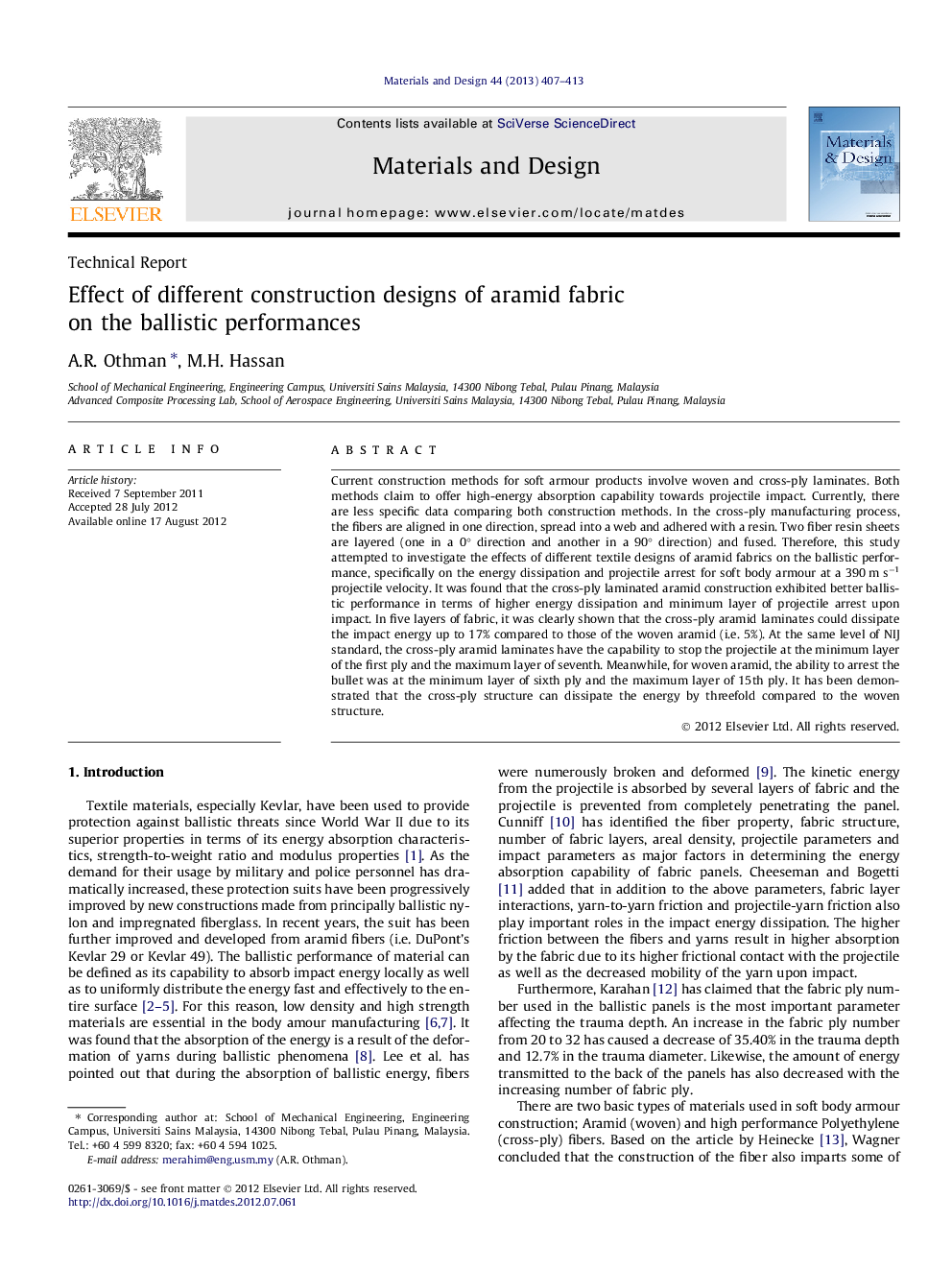| Article ID | Journal | Published Year | Pages | File Type |
|---|---|---|---|---|
| 830349 | Materials & Design (1980-2015) | 2013 | 7 Pages |
Current construction methods for soft armour products involve woven and cross-ply laminates. Both methods claim to offer high-energy absorption capability towards projectile impact. Currently, there are less specific data comparing both construction methods. In the cross-ply manufacturing process, the fibers are aligned in one direction, spread into a web and adhered with a resin. Two fiber resin sheets are layered (one in a 0° direction and another in a 90° direction) and fused. Therefore, this study attempted to investigate the effects of different textile designs of aramid fabrics on the ballistic performance, specifically on the energy dissipation and projectile arrest for soft body armour at a 390 m s−1 projectile velocity. It was found that the cross-ply laminated aramid construction exhibited better ballistic performance in terms of higher energy dissipation and minimum layer of projectile arrest upon impact. In five layers of fabric, it was clearly shown that the cross-ply aramid laminates could dissipate the impact energy up to 17% compared to those of the woven aramid (i.e. 5%). At the same level of NIJ standard, the cross-ply aramid laminates have the capability to stop the projectile at the minimum layer of the first ply and the maximum layer of seventh. Meanwhile, for woven aramid, the ability to arrest the bullet was at the minimum layer of sixth ply and the maximum layer of 15th ply. It has been demonstrated that the cross-ply structure can dissipate the energy by threefold compared to the woven structure.
► The effect of different textile design of aramid fabrics on the ballistic performance. ► Two fiber resin sheets are layered (one in a 0° direction and the other in a 90° direction) and fused. ► Put under projectile arrest for soft body armour at a 390 m s−1 projectile velocity. ► Cross-ply laminated aramid construction exhibited better ballistic performance.
